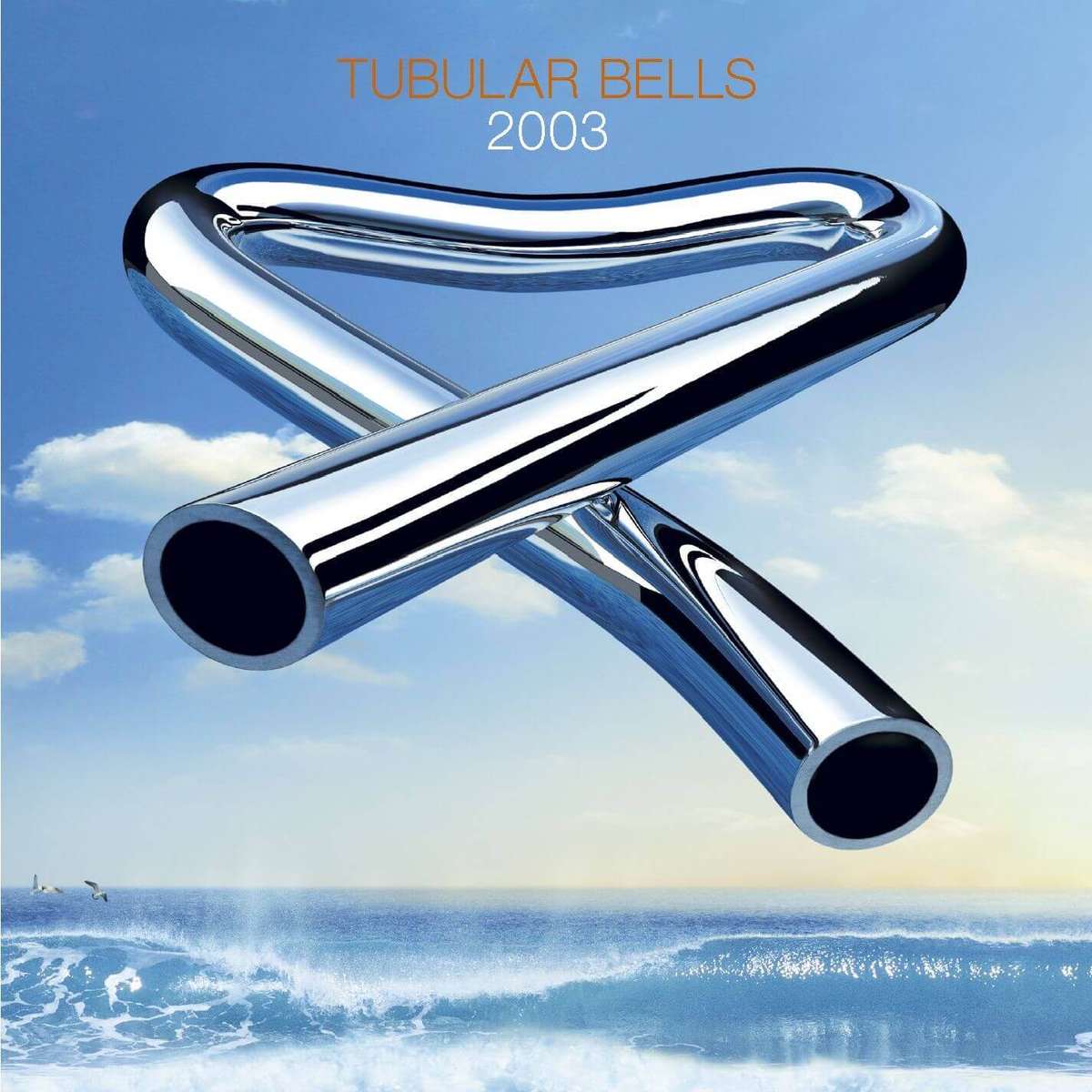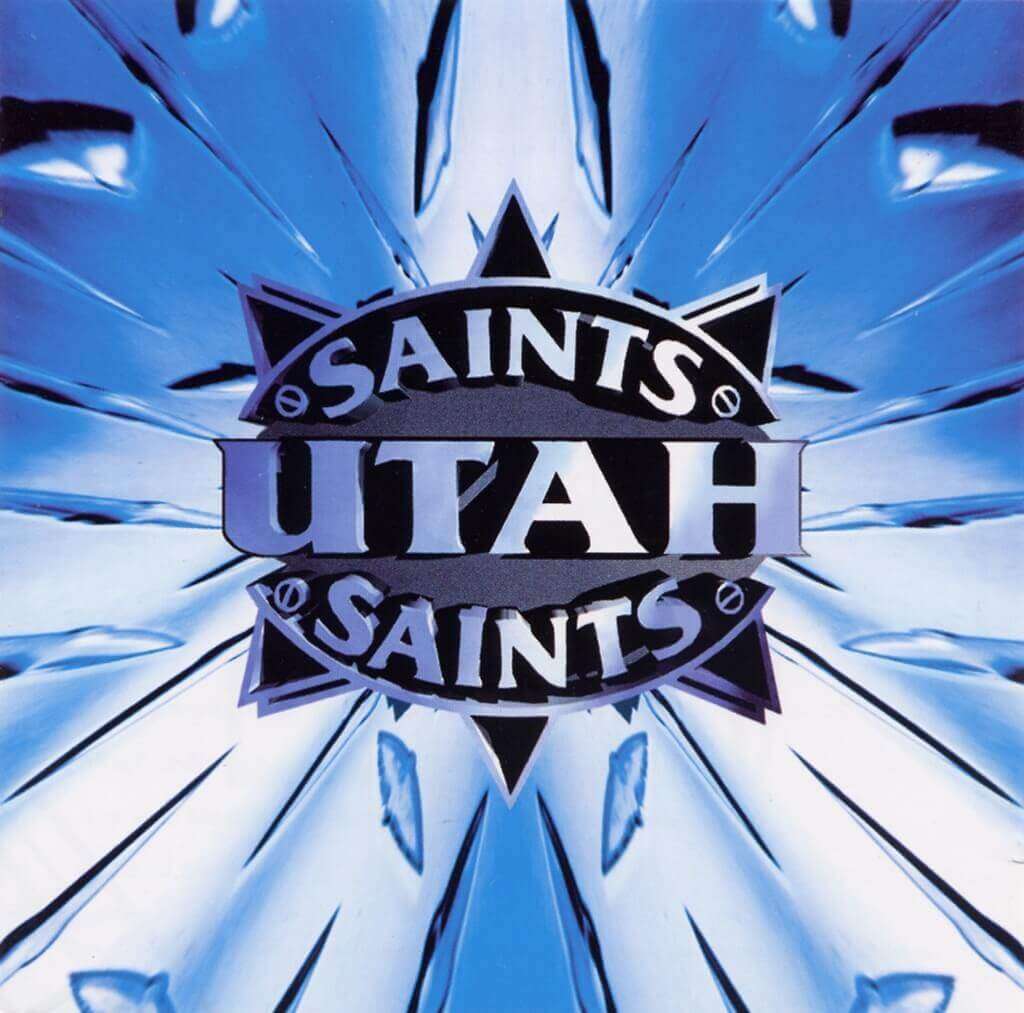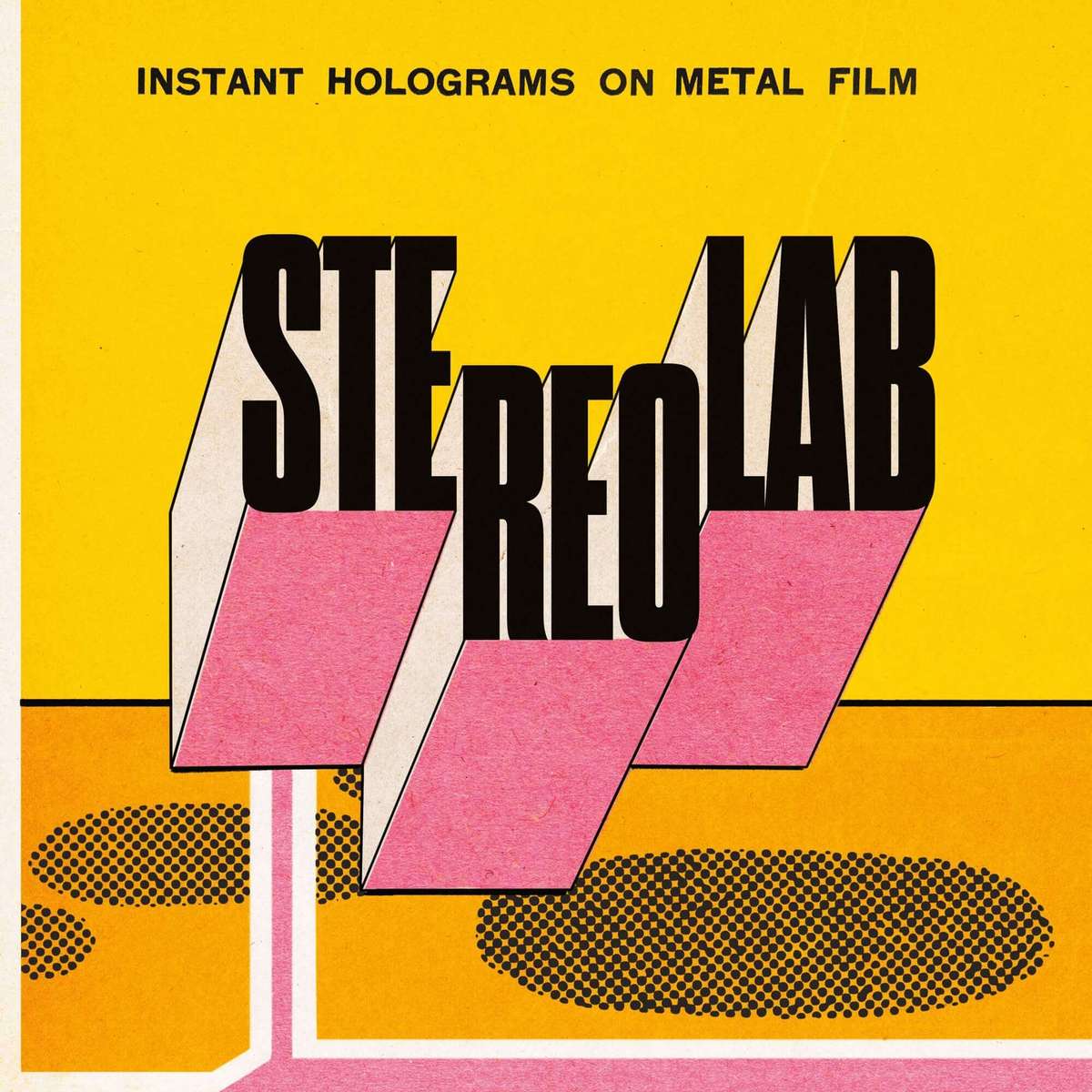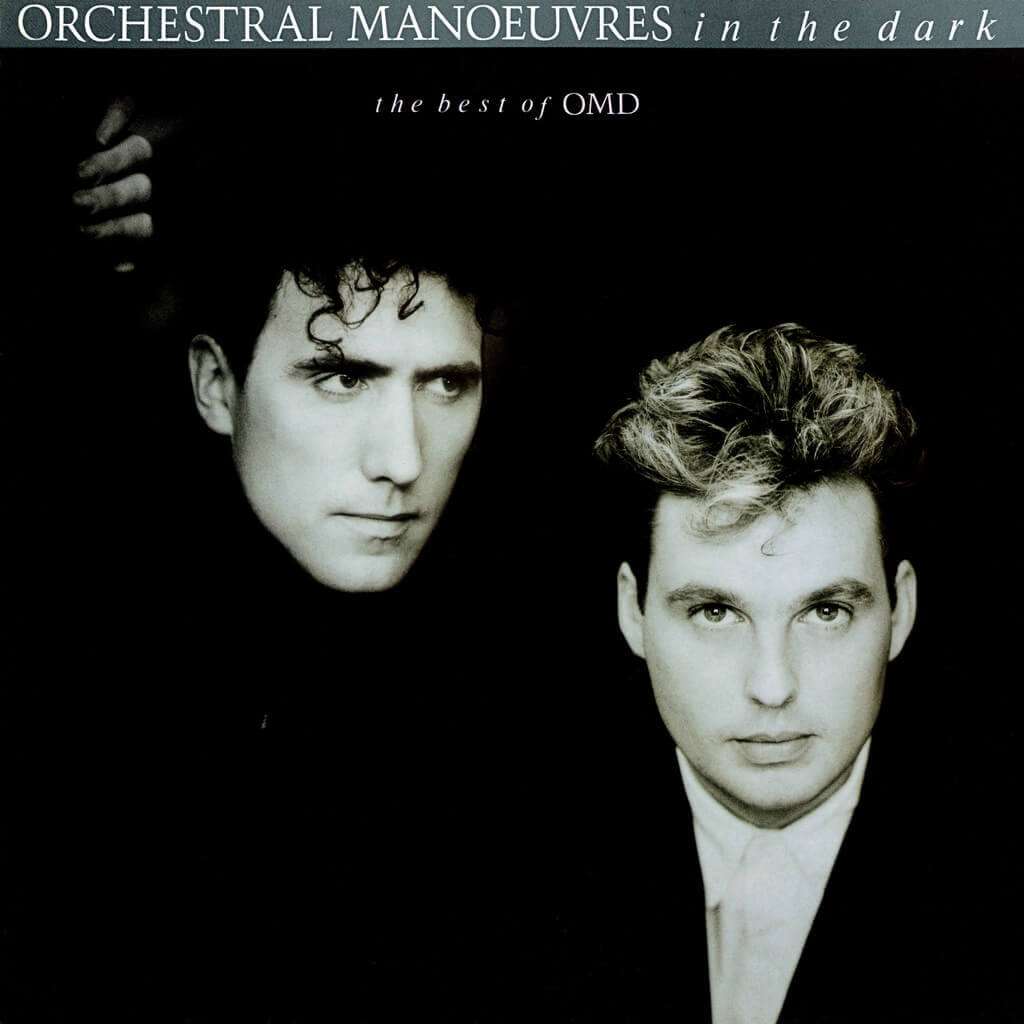Eclectic Soundscapes of the 90s: Jellyfish to U2s Timeless Hits
Bellybutton by Jellyfish 🌊
Recording Journey 🎤
The story of Bellybutton, the debut album by Jellyfish, is steeped in a blend of influences that showcase the bands unique sound, steeped in power pop and rock. Released on August 7, 1990, the album was produced by notable figures Albhy Galuten and Jack Joseph Puig at the prestigious Bill Schnee Studio. What makes its recording especially intriguing is how it mirrored the experimental spirit of the early 90s—riddled with rich harmonies and punchy melodies that were characteristically reminiscent of The Beatles and Queen, yet distinctively fresh. Amid certain chaos typical of a budding band, Jellyfish managed to capture a polished sound with a flair for melodic hooks that later garnered a cult following.
The creative synergy among band members Andy Sturmer and Roger Manning resulted in songs that had not only infectious choruses but also intricate arrangements. The album-making process was marked by late nights, innovative experiments with studio technology, and an ambitious approach to songwriting that would lay the groundwork for their future projects. One of the lesser-known facts is that many tracks on Bellybutton were recorded as early demos yet transformed into polished pieces that defied the mere ‘debut’ label, establishing an adventurous trajectory early on.
Cultural Impact 🌍
When Bellybutton hit the shelves, it sailed into an era buzzing with grunge, hip-hop, and the rise of alternative rock. However, this album stood apart, offering a vibrant pop alternative. Its singles—“The King Is Half-Undressed,” “That Is Why,” and “Baby’s Coming Back”—received substantial airplay, resonating particularly with the burgeoning Modern Rock audience of the time. The albums colorful cover art and longbox packaging were iconic, contributing to its aesthetic appeal during a transitional time in music consumption.
Despite its relatively modest commercial performance, Bellybutton cast a long shadow on the power pop genre, influencing later artists such as Fountains of Wayne and Ben Folds Five. The intricate arrangements and smart lyrics showcased Jellyfish’s ability to marry pop sensibility with rock cred, leading to a smaller, dedicated fan base that has only grown in appreciation over the decades.
Legacy and Influence 🏆
As time rolled on, Bellybutton became an album that defined a generation of music enthusiasts who craved less the angst prominent in grunge and more exuberant creativity. Its legacy is not just in its songs but in the way it opened doors for bands favoring melodic genius and quirky arrangements. Additionally, the 30th-anniversary reissue in 2020, which included a second disc of demos, further cemented its status as a classic, rekindling interest from both old fans and a new generation.
Jellyfishs short-lived catalog may lead some to overlook Bellybutton, but it has managed to evoke curiosity and admiration through various pop culture references and covers by contemporary artists. The clever interplay of pop, rock, and an eclectic mix of genres lay the groundwork for what the band’s next creation, Spilt Milk, would continue to refine and elevate.
In summary, Bellybutton is not just an album; it’s a vibrant tapestry woven with the threads of musical experimentation, cultural commentary, and unapologetic joy. Its sound and spirit remain relevant, reminding us that sometimes the glorious mess of studio life results in timeless music that continues to resonate across generations.
Tubular Bells 2003 by Mike Oldfield 🎶
A New Beginning 🔄
In 2003, British composer and multi-instrumentalist Mike Oldfield revisited his landmark album, Tubular Bells, initially released in 1973. This re-recording, aptly titled Tubular Bells 2003, marks a significant turning point in Oldfields artistic journey. It was created to celebrate the 30th anniversary of the original release and also served as a tribute to the late Viv Stanshall, who originally narrated the iconic monologue on the original track. For this version, John Cleese stepped in as the Master of Ceremonies, adding a fresh yet nostalgic twist to the auditory experience. 🎤
Recording Magic in the Studio 🎧
Oldfields technical prowess in the studio is legendary. For Tubular Bells 2003, he utilized state-of-the-art recording technology available at the time, resulting in a richer and more detailed soundscape compared to the original. The album was recorded at his home studio, and Oldfields use of digital instruments and layered recordings allowed for an intricate blend of sounds that was groundbreaking. Interestingly, this version maintained the essence of the 1973 original while employing modern production techniques that showcased Oldfields evolution as a musician. 🌀
Cultural Reverberations 🌍
Tubular Bells is more than just an album; its a cultural phenomenon. The original gained immense notoriety after being featured in the horror film The Exorcist, which cemented its place in popular culture. The 2003 re-recording didn’t just appeal to hardcore fans; it introduced a new generation to Oldfield’s visionary music. Remixes and revivals of its melodies have influenced a plethora of artists across various genres, from progressive rock to electronic music, showcasing its lasting legacy in the fabric of contemporary sound. 🌟
The Modern Fan Experience 👥
Fans received Tubular Bells 2003 with anticipation and excitement, eager to see how Oldfield would reinterpret his classic work. The album even featured a concert film that captured the live performance, allowing followers to experience the music visually as well. Fans from diverse backgrounds shared their stories, some recalling how Oldfield’s music served as a soundtrack to pivotal moments in their lives. This connection to the past while embracing the present illustrates the emotional resonance of Oldfield’s work, transcending generations. 💖
Legacy and Influence 🏆
Fast forward to today, Tubular Bells continues to influence artists and composers. Its fascinating to observe how various musicians reference or sample the intricate layers and melodious themes of this seminal work. The impact of Tubular Bells 2003 can be seen in artists who embrace the blend of musical styles, mirroring Oldfield’s own genre-defying approach. Its influence stretches well beyond rock, impacting genres like new age, instrumental, and film scores, further solidifying Oldfields status as a visionary in music history. 🌈
In conclusion, Tubular Bells 2003 is not merely a re-recording of a classic; it is a celebration of artistic evolution, showcasing how timeless melodies can adapt and thrive in a changing musical landscape. Through this album, Mike Oldfield reminds us of the power of music to connect, inspire, and resonate across time. 🎼
Utah Saints by Utah Saints 🎧
Rave Revolution: The Sound of a New Era 🎵
In the early 1990s, the British music scene was buzzing with the electrifying energy of house music and rave culture. Enter Utah Saints, a dynamic duo from Leeds, Tim Garbutt and Jez Willis, whose self-titled debut album, released in 1992, would not only encapsulate this vibrant moment but also redefine electronic musics relationship with pop and rock. Their innovative use of sampling—drawing from diverse influences like Candi Staton, Kate Bush, and The Human League—created a unique sound that broke through conventional genre boundaries. This album was a sonic collage, merging euphoric beats with memorable hooks that resonated deeply with audiences. 🌌
Crafting Chaos: Recording the Album 🎹
Creating Utah Saints was no small feat; the duo set themselves apart by heavily employing samples, an innovative technique that was still in its infancy. They embraced chaos, compiling a musical patchwork that reflected the frenetic energy of the rave scene. Utilizing a sampler (a groundbreaking technology at the time), they stitched together melodies and rhythms from an array of unexpected sources, yielding tracks that were rich in sonic variety and emotional depth. Their lead single, Something Good, which sampled Kate Bushs Cloudbusting, became an anthem of club culture, making waves not just on the dance floor but airwaves as well. The album mixed studio wizardry with live energy, creating an exhilarating listening experience. ⚡️
A Cultural Milestone: Impact on Music 🌍
The impact of Utah Saints reached far beyond the charts. They were among the pioneers of stadium house, a term coined by none other than The KLF’s Bill Drummond. This style aimed to bring the rave experience to massive audiences, transforming nightclubs into concert halls. Their music not only fueled dance floors but also influenced a generation of electronic artists. The blending of pop sensibility with dance tracks saw them changing perceptions of what electronic music could achieve commercially and artistically. It opened the doors for artists like Fatboy Slim and The Chemical Brothers, leading to a golden era for dance music in the UK. 🌟
Legacy and Influence: More Than Just Hits 🏆
While the album yielded hits like What Can You Do for Me and Believe in Me, Utah Saints legacy is more profound than chart success. They forged a new path for electronic music that resonated with the mainstream while still holding the ethos of underground culture. Their fearless approach to merging genres paved the way for countless artists who would come after them. In a landscape that could have easily forgotten them as a novelty act, they instead became torchbearers for a more inclusive and experimental musical future. Even today, their influence can be traced through various genres, from pop to electronic dance, prompting modern artists to explore the boundaries of sampling and genre fusion. 🎶
Reimagining the Past: Modern Reflection 🔄
In a striking nod to their influence, Utah Saints have reissued this seminal album, celebrating its legacy 30 years on. This modern release provides a new opportunity for listeners to experience their pioneering sound, inviting both longtime fans and new audiences to dive into the tapestry of music that paved the way for the electronic genres we know today. The revival of interest in their work highlights not only their timeless sound but a cultural relevance that continues to inspire. 🎉
Utah Saints were more than just a musical duo; they became a crucial element in the fabric of 90s music, leaving a footprint that is still felt today. Their ability to innovate while remaining true to the heart of the rave culture made their debut album a landmark in music history. 🌈
Instant Holograms On Metal Film by Stereolab 🎶
Recording Journey 🎵
Stereolab’s first album in over fifteen years, Instant Holograms On Metal Film is a vibrant tapestry woven from both old and new influences. Recorded during a period of reflection and resurgence, the album encapsulates the bands distinctive sound—a fusion of pop, electronic, and avant-garde jazz. Laetitia Sadier and Tim Gane, the core members, sought to blend their lush harmonic sensibilities with experimental textures, resulting in a collection that strikes a resonant chord in listeners. The album bears the hallmark of Stereolabs innovative approach to music, using analog synths and bleepy-bloopy sounds that evoke the spirit of their earlier work while pushing their sound into fresh territory.
Intriguingly, part of the recording process took place in a retrofitted Parisian apartment, where echoes of the city’s historical landscape merged with the modern. This setting allowed the band to tap into a unique creative flow, resulting in samples that feel both nostalgic and futuristically sleek.
Cultural Impact 🌍
Upon its release, Instant Holograms On Metal Film not only rekindled Stereolabs relationship with their audience but also resonated with a new generation of music enthusiasts. The album’s exploration of themes such as the post-industrial condition and intellectual discourse finds relevance in todays rapidly changing cultural landscape. Within the lush instrumentals and intricate melodies, there exists a complexity that encourages listeners to engage both emotionally and intellectually.
Stereolabs distinctive “future pop” style has influenced a myriad of artists across genres—from indie pop to electronic music, musicians draw inspiration from their innovative arrangements and blend of styles. In a world increasingly defined by digital experiences, their organic instrumentation offers a refreshing counterbalance, fostering a conversation about authenticity in music.
Legacy and Influence 🏆
Instant Holograms On Metal Film stands as a testament to Stereolabs unwavering commitment to artistic evolution. It revives their legacy while also charting new paths. Songs from the album have begun to make their way into the playlists of both aficionados and newer listeners, often cited as a reference point for those exploring modern experimental pop sounds.
Fans of the band celebrate Instant Holograms for its ability to maintain the essence of Stereolab while inviting a new exploration of sonic boundaries. The luscious textures and rich harmonies invite listeners to create their own stories in a world painted with sound. As the album garners attention, its place in the pantheon of Stereolabs discography is cemented, ensuring that the band’s influence on both music and culture continues to flourish.
In conclusion, Instant Holograms On Metal Film reinforces Stereolabs position as pioneers of genre fusion, uniquely intertwining historical influence with contemporary relevance. Whether you’re a long-time listener or new to their sound, the album offers a reflective journey, echoing the complexities of modern life while instilling a sense of wonder and curiosity. 🌌
Spilt Milk by Jellyfish 🍭
Recording Journey 🎵
Released on February 9, 1993, Spilt Milk stands as Jellyfishs second and final studio album, encapsulating the bands distinct blend of power pop and art rock. This record was birthed in the creative ashes of their previous album, Bellybutton, showcasing a more ambitious sound that blended lush harmonies with intricate instrumentation. The band’s founding members, Andy Sturmer and Roger Manning, took the reins not only in songwriting but also in co-producing the album, pushing the boundaries of what was possible in a studio setting. 🎚️
One of the most notable aspects of Spilt Milk was its intricate production. Unlike the polished sheen that was common in the early ‘90s, the album embraced a rawer, more complex sonic landscape. The duo experimented with a variety of recording techniques and instruments—everything from the harpsichord to strings and horns—resulting in a vibrant and eclectic sound that was somewhat ahead of its time. Much of the album was laid down using analog tape, which gave it a warm and organic feel, a stark contrast to the digital productions that were beginning to dominate the 90s music scene. 🎶
Lyrical Depth and Themes 📜
Lyrically, Spilt Milk doesnt shy away from the emotional complexities of life. The songs oscillate between whimsical observations and poignant reflections. Notable tracks like “Joining a Fan Club” explore the quirks of fandom and the pursuit of identity, while the somber “The Ghost at Number One” reflects on the haunting nature of fame and the music industry’s pitfalls. The album’s lyrics are often layered with clever wordplay and metaphor, showcasing Sturmer’s knack for storytelling. Fans and critics alike have appreciated how these lyrics resonate with the ups and downs of personal and professional life, making it relatable even decades later. 🌧️
Cultural Impact 🌍
The cultural context of Spilt Milk places it in the milieu of the 90s alternative scene, yet it standouts as a hidden gem. While grunge dominated radio waves, Jellyfish carved out a niche for themselves with their elaborate harmonies and smart pop sensibilities. Though it didn’t achieve commercial success on par with other giants of the era, its influence can be traced through a multitude of artists who followed. Bands like Fountains of Wayne, The Posies, and even modern acts like The 1975 have drawn from the rich tapestry of sounds and styles that Spilt Milk presents. The album has garnered a devoted following over the years, championed by those who appreciate musicianship and clever songwriting. 🎸
Legacy and Influence 🏆
Today, Spilt Milk is often cited in discussions about underrated albums of the 90s. Fans were treated to a treasure trove when Omnivore Recordings released a deluxe edition in 2015, which included demos and live tracks that provided deeper insight into the band’s creative process. This has only strengthened Jellyfish’s legacy, as newer generations discover the album’s eclectic charm and ambition. Though the band only had a brief run, their catalog, particularly Spilt Milk, has left an indelible mark on music history, steering the course for future artists aiming to blend pop sensibilities with experimental approaches. ✨
In retrospect, Spilt Milk embodies the spirit of creative risk-taking and remains a testament to Jellyfishs unique sound. With its blend of ambitious production, poignant lyrics, and cultural significance, it stands not just as an album, but as a narrative woven into the fabric of music history that continues to inspire.
Mad! by Sparks 🎉
The Birth of Eccentricity 🎶
“Mad!” marks a bold chapter in Sparks eclectic discography. Emerging in 2023, the album showcases the Mael brothers’ distinctive knack for blending avant-garde lyricism with sumptuous orchestration. This time, they dive headfirst into a universe that dances on the edge of absurdity, much like the band itself. The album is a twisted exploration of modernity wrapped in colorful, yet at times dissonant sounds, that echoes the vibrant chaos of our contemporary landscape. 🎨
Quirky Production Techniques 🎛️
What makes “Mad!” particularly notable are its innovative production techniques, which are a hallmark of Sparks style. The brothers mix electronic pulses with traditional instrumentation, creating a dynamic sound that feels fresh yet strongly reminiscent of their earlier works. The album breathes life into the retro-futuristic vibe they’ve mastered over the decades, experimenting with synthesizers and sampled sounds that transport listeners back to the quirky days of art rock and glam. This juxtaposition of the old with the new reinforces Sparks ability to evolve while remaining distinctly themselves. 🔄
A Social Commentary Wrapped in Humor 🤡
The Mael brothers have always been masters of socio-political sarcasm, and “Mad!” is no exception. Each track is akin to a colorful commentary on today’s societal norms and personal dynamics. From the whimsical “JanSport Backpack” reflecting on youthful naivety to the sardonic title track “Mad!” addressing modern madness in a digital age, the songs are layered with meaning and tongue-in-cheek humor. Sparks invites their audience to laugh while contemplating serious themes, a duality that keeps fans engaged and guessing. 🔍
The Personal Touch of the Mael Brothers ❤️
In “Mad!”, Sparks does not shy away from their history; instead, they embrace it. After the success of Edgar Wrights documentary “The Sparks Brothers,” which illuminated their storied past, the duo channels their experiences into this album. Personal anecdotes and reflections intermingle with the albums narrative, adding depth that resonates with long-time fans and newcomers alike. The relationship between the brothers is splendidly symphonic, with each layer reflecting their quirky dynamic and the unique bond they share. 👫
Fan Reception and Cultural Impact 🌍
Fans of Sparks have responded to “Mad!” with enthusiasm, appreciating the band’s clever wit and distinctive sound. Critics have praised the album as a continuation of their legacy while also recognizing its contemporary relevance. “Mad!” succeeds in capturing the spirit of an audience that is both nostalgic for classic Sparks and eager for innovative takes on modern issues. The album reflects broader cultural conversations, making it not just a collection of songs but a relevant commentary on the zeitgeist. 🌟
Legacy in the Making 🏆
As Sparks continues to redefine their sound, “Mad!” stands as a testament to their unyielding creativity. The band has shown time and again that they are not only veteran musicians but also innovative artists who understand the importance of reinvention. This album will undoubtedly influence a new generation of musicians who seek to push boundaries and experiment within their own work. Sparks remains an ever-fascinating study in the balance of nostalgia and innovation, securing their legacy as pioneers in the music world. 🚀
With “Mad!”, Sparks confirms that they are as relevant as ever, with a clear vision that both honors their past and challenges the present. It’s a mad world out there, but the Mael brothers remind us that sometimes it’s the quirkiest melodies that carry the deepest truths.
Dont Know How To Party by The Mighty Mighty Bosstones 🎉
The Sound of Ska Punk Evolution 🎵
The Mighty Mighty Bosstones burst onto the scene in the early 90s, a time when the ripples of ska were beginning to flavor the grunge-dominated landscape of alternative rock. Their third studio album, Dont Know How To Party, released in 1993, finds a distinctive space within this sonic hybrid, combining elements of punk rock with special brass instrumentation that characterizes ska. This album serves as a defining moment for the band, showcasing their evolution towards a sound that was more complex yet still refreshingly high-energy. 🎺
Unlike many of their contemporaries who were locked into either punk or pop, the Bosstones embraced a multi-layered approach, weaving together catchy hooks with a punchy brass section that made tracks like The Impression That I Get” icons of the genre. The albums title track, “Dont Know How To Party,” captures this ethos perfectly, boasting an infectious rhythm that uplifts while amusingly lamenting the struggle many have with social expectations and nightlife.
A Rollercoaster of Reception 🎢
Upon its release, Dont Know How To Party received mixed reviews, with some critics appreciating its lively instrumentation and the bands charismatic punk attitude, while others questioned its cohesiveness. However, what might have been seen as divisive actually helped the Bosstones cultivate a loyal fanbase that continues to thrive. Their sound resonated with a generation that was seeking alternatives to the mainstream, offering a soundtrack for everything from parties to protests. Through heavy touring and relentless energy, the album eventually grew on listeners, paving the way for the bands later successes. 🚀
Behind the Scenes: Recording Dynamics 🔊
The recording sessions for Dont Know How To Party were nothing short of chaotic, embodying the bands mantra of spontaneity. The album was recorded at the famous Squawkbox Studio in Boston, which fostered a laid-back yet frenetic vibe that matched their exuberant style. Band members often spoke of the hilarity of trying to capture the perfect moment amidst their raucous energy. This rawness adds an authenticity that fans cherish, reflecting their passionate live performances that blur the lines between concert and party.
Cultural Context: A New Wave of Ska 🌍
The early 90s marked a resurgence of interest in ska music, particularly in the United States. Dont Know How To Party was released during this cultural renaissance, sitting alongside similarly influential albums from bands like NOFX and Reel Big Fish. This era was characterized by its iconic fashion—think checkered patterns and sharp suits—and an underlying ethos of rebellion against mainstream music conformity. The Bosstones, with their fusion of ska and punk, were at the forefront of this movement, influencing countless bands that followed and promoting skas infectious energy across the globe.
The Legacy Lives On 🏆
While some may underestimate Dont Know How To Party, it undeniably laid the groundwork for the Mighty Mighty Bosstones future successes. The albums tracks are often nostalgic highlights at their concerts, invoking cheers of recognition from die-hard fans. More importantly, it has influenced a new generation of artists within the ska-punk genre who cite the Bosstones work as pivotal in shaping their own sound. Years later, the album remains a cultural touchstone for fans of not only the band but the ska genre itself. It stands as a testament to the eras creative spirit and the vibrancy of underground music scenes.
In summary, Dont Know How To Party may seem like a playful commentary on the awkwardness of social gatherings, but it is ultimately a reflection of a thriving musical experiment—one that continues to inspire. So whether youre revisiting it for sheer joy or hearing it for the first time, this album invites everyone to join the party! 🎊
- View The Mighty Mighty Bosstones on russ.fm
August and Everything After by Counting Crows 🌧️
The Road to Recognition 🎤
Released on September 14, 1993, August and Everything After marked the debut studio album for Counting Crows, leading to a significant shift in the alternative rock landscape of the early 90s. With lead singer Adam Duritz at the helm, the album eerily balances moody introspection with infectious melodies. The album was produced by the legendary T Bone Burnett, known for his ability to capture raw, emotional performances. The sessions took place in Los Angeles, where Burnetts unique production techniques emphasized the organic sounds that seep through each track.
One of the notable aspects of this album is the way it marries rock with folk, featuring acoustic influences that were somewhat unconventional for contemporary rock albums at that time. This fusion resonates through tracks like Mr. Jones and Round Here, which not only encapsulate the emotional weight of the lyrics but also reflect the bands commitment to storytelling.
Lyrical Depth and Personal Storytelling 📖
Counting Crows are renowned for their vivid imagery and emotive lyrics, and August and Everything After is no exception. The tracks are laden with autobiographical anecdotes, painting a picture of longing and reflection. The spotlight single Mr. Jones, a tale of aspiration and disillusionment, captures the zeitgeist of a generation eager for fame but grappling with the intricacies of identity.
Adam Duritz’s penmanship shines especially in Round Here, where he delves into themes of unfulfilled dreams and memory. The profound lyrics are relatable in their vulnerability, allowing listeners to find fragments of their own stories within the music. This personal touch has endeared the band to fans, creating a deep emotional connection that persists to this day.
Cultural Resonance and Impact 🌍
Released just before the floodgates opened for grunge and alternative rock, August and Everything After emerged as a beacon for emotional and introspective songwriting. The album arrived during a time when the music industry was heavily focused on gritty sounds and darker subject matter. However, Counting Crows offered an alternative with their melodic arrangements and reflections on life’s complexities, thus influencing a myriad of artists that followed.
Moreover, the album reflects a poignant cultural context in the early 90s, where themes of disillusionment and longing resonated with youth coming of age in a rapidly changing world. Countless artists have cited this album as a source of inspiration, particularly within the alternative and indie scenes, encouraging them to explore storytelling within their own music.
Lasting Legacy and Fan Reception 🏆
August and Everything After exceeded expectations commercially, earning multi-platinum status shortly after its release. Mr. Jones propelled the album into the mainstream, but the enduring love for the album can also be attributed to the intimate live performances that Counting Crows cultivated throughout their career. Concert-goers would often report that their live renditions of these songs brought them to tears, highlighting the powerful connection the band has with their audience.
Signing on to countless festivals and tours, they’ve introduced the album to new generations of listeners, perpetuating its relevance. As we move through the decades, August and Everything After remains not only a seminal album of the 90s but also a cornerstone of modern rock—a testament to the timelessness of its themes and its capacity to resonate across different eras.
In retrospect, Counting Crows August and Everything After is a beautiful portrayal of the human experience, capturing the essence of longing, love, and reflection in a way that continues to inspire. As we reflect on this influential work, its clear that its spirit endures—reminding us of the profound power that music holds in telling our stories and shaping our lives. 🎶
Orbital 2 by Orbital 🎶
The Brown Album: A Unique Identity 🎨
Released in May 1993, Orbital 2, affectionately dubbed the Brown Album, marked a pivotal moment for the Hartnoll brothers, Paul and Phil, as they deftly navigated the exhilarating waters of early 90s rave culture. Following their groundbreaking debut, the Green Album, this release cemented their status as electronic pioneers. Its earthy cover design—a stark contrast to the vibrant colors typically associated with rave culture—mirrored the albums sonic depth, creating a unique identity that still resonates today. 🌍
Sonic Exploration: Techno Meets Emotion 🎧
With Orbital 2, the duo set out on a sonic quest that transcended traditional techno boundaries. Tracks like Halcyon + On + On and Impact (The Earth Is Burning) are not just dancefloor fillers; they are emotional landscapes rich in melody and rhythm. The haunting vocals interspersed within tracks evoke a sense of nostalgia, while innovative production techniques pave the way for a lush and atmospheric experience. Orbitals distinctive use of sampling and looping adds layers of complexity, creating a listening experience that is both cerebral and deeply felt. 🎵
Cultural Context: The Rave Revolution 🌟
The early 90s was a vibrant era for electronic music, driven by the rave revolution sweeping across the UK. Orbital 2 became a soundtrack for this cultural movement, resonating with the youthful spirit of liberation and unity. The albums pulsating beats and progressive sounds placed it at the forefront of the burgeoning electronic scene. It spoke to a generation seeking escape from the mundanity of everyday life, encapsulating the euphoric highs and emotional lows associated with rave culture. The Hartnoll brothers were not just creating music; they were defining a lifestyle. 💿
The Legacy of Orbital 2: Influencing a Generation 🏆
As the years rolled on, the influence of Orbital 2 became apparent across various genres. Its lush, melodic lines have inspired numerous artists—from ambient musicians to techno producers—who cite the Hartnoll brothers as major influences. Tracks such as Halcyon + On + On have even found their way into pop culture, featured in films and television, cementing their status as timeless classics that continue to inspire new generations of creators. This speaks to the album’s lasting impact on music, shaping the trajectory of electronic genres for decades to come. 📺
A Rebirth: Celebrating the Albums Reissue 🎉
In a fitting homage to its legacy, Orbital 2 was reissued in deluxe formats, showcasing remastered tracks and previously unreleased content. This celebration allows both new listeners and long-time fans to revisit the albums intricate soundscapes and discover its subtle nuances. The reissue has reignited interest in the Hartnoll brothers pioneering work, inviting fresh discussions about the albums significance in the evolution of electronic music. With lush liner notes and rare photographs, the deluxe version serves as a treasure trove for enthusiasts, offering deeper insights into the creative process that birthed this iconic album. 📖
Conclusion: An Enduring Journey ✨
Orbital’s Orbital 2 remains an influential piece of art, combining innovative production with emotional resonance. Its ability to intertwine the pulsating energy of rave culture with deep, introspective journeys ensures its place in music history. As we revisit its tracks today, we engage not just with a collection of songs, but with a cultural movement that continues to inspire and captivate. The Brown Album is more than just a musical artifact; its a celebration of creativity, revolution, and the everlasting spirit of electronic music. 🎶
Orchestral Manoeuvres In The Dark by Orchestral Manoeuvres in the Dark 🎹
Synth-Pop Pioneers: A Birth of an Era 🌟
In 1980, a band from the Wirral, England, emerged with a unique sound that would soon capture the essence of a burgeoning genre: synth-pop. Orchestral Manoeuvres in the Dark (OMD) unleashed their self-titled debut album, which was not just an album; it was a declaration of the new wave movement that had begun to take root in the UK. With a distinctive blend of melodic hooks, innovative synthesizers, and experimental soundscapes, OMD paved the way for others in the genre, making them key players in what would become a musical revolution.
Capturing the Studio Magic 🎧
The recording of Orchestral Manoeuvres In The Dark was an exercise in experimentation. The duo, consisting of Andy McCluskey and Paul Humphreys, went beyond traditional recording techniques. Utilizing instruments like the Melotron—previously favored by progressive rock bands—they infused their sound with lush string and choir effects, creating an atmospheric depth that resonated with listeners. The albums standout track, Electricity, showcased this innovative approach, featuring a pulsating synth line that conveyed energy and emotion in equal measure, becoming a dance floor staple. 💃
Cultural Context: A Time of Transition 🌍
Releasing the album during a politically charged era in the early 80s, OMDs music became an unwitting soundtrack to social change. The rise of synth-pop coincided with the post-punk disillusionment, and OMD artfully blended their electronic sounds with the socio-political themes of the time. Songs like Messages offered a commentary on communication and disconnect, which felt particularly relevant during a time when the world was witnessing significant technological shifts. This resonance with contemporary issues added layers of meaning to their music, solidifying OMD’s position in the cultural landscape.
Legacy: Influencing a Generation 🎤
The ripple effects of Orchestral Manoeuvres In The Dark are undeniable. The synth-driven sound prepared the ground for other iconic bands such as Depeche Mode and Pet Shop Boys. OMD’s ability to marry pop sensibilities with electronic experimentation influenced countless artists across different genres. Even in today’s music scene, one can trace the sounds of current artists back to OMD’s foundational contributions. Their track “Souvenir” is often cited by contemporary acts as a significant influence, showcasing the way OMD has left a lasting imprint on pop music.
Untold Tales: The Bands Personal Journey 🚀
Behind the music, OMDs journey was not without its trials. They began experimenting with their sound in the local Wirral scene and were unafraid to challenge the status quo. Interestingly, their fascinating story includes an early encounter with fellow synth-pop innovators; when Neil Tennant and Chris Lowe of Pet Shop Boys first met, it was OMDs singles they bonded over. This camaraderie within the synth-pop family illustrates the profound connections formed during this creative flowering.
Conclusion: The Enduring Relevance of OMD 🎶
As we reflect on Orchestral Manoeuvres in the Darks debut, it’s clear that this album was much more than a collection of songs; it was a beacon that illuminated the future of electronic music. Its experimental spirit, cultural reflections, and the sheer creativity of its creators ensure that OMD will remain a significant chapter in music history. The echoes of their synth-pop roots continue to inspire new generations, proving that great music has no expiration date.
With each listen, Orchestral Manoeuvres In The Dark invites us to explore the mechanical and the emotional, leaving us with a sense of wonder about where music can take us next. 🚀
The Unforgettable Fire by U2 🔥
Recording Journey 🎵
In 1984, U2 embarked on a transformative journey with their album The Unforgettable Fire. This marked the bands first collaboration with producers Brian Eno and Daniel Lanois, which shifted their musical direction significantly. The recording sessions took place at the Slane Castle in Ireland, a location chosen for its regal ambiance and historic essence 🎭. This castle setting breathed new life into their sound, lending it an atmospheric quality that was both ethereal and powerful.
The band, particularly frontman Bono, sought to transcend the aggressive political themes of their previous work. Instead, they ventured into deeper emotional and abstract territories. The songs were influenced by artists like David Bowie and Lou Reed, paving the way for a more introspective and cinematic approach to rock music 🌌. The lead single, Pride (In the Name of Love), about Martin Luther King Jr., not only resonated with listeners but also set a tone of advocacy and hope that defined the album.
Cultural Impact 🌍
Released during a time of significant political turmoil, particularly in Ireland, The Unforgettable Fire became a soundtrack for change. The albums themes of liberation and peace were remarkably timed, coinciding with global movements for civil rights and social justice. The sound of U2 began weaving experimental ambient influences into their lyrics, and their interplay of emotions became a touchstone for many artists that followed. Notably, this album inspired a generation of musicians, reflecting its legacy within the post-punk and alternative rock genres.
With The Unforgettable Fire, U2 carved out a unique identity, one that was as much about the music as it was about the message. Songs like Bad encapsulated raw vulnerability and passionate delivery, elevating U2 from mere rock band status to cultural icons 🌠.
Legacy and Influence 🏆
Decades later, The Unforgettable Fire stands out as not just an important U2 project but a milestone in rock history. Its expansive soundscapes set the stage for future works like The Joshua Tree and Achtung Baby, showcasing how U2 continued to innovate and expand their musical horizons. The shift towards more abstract lyrics and conceptual deeper themes opened up possibilities for other artists.
The impact was also felt in the broader realm of music videos. U2 embraced visual storytelling, constantly challenging the medium to capture the essence of their songs. Pride became an anthem utilized in various civil rights movements, reinforcing the bands role not only as musicians but as activists advocating for global change 🕊️.
A Lasting Connection 💖
Today, The Unforgettable Fire remains a pivotal album — its messages and audacious creativity resonate just as strongly, perhaps even more so, in our current societal landscape. As U2 continues to tour and make music, the echo of this album endures in their live performances and fan experiences. Its reflective themes and innovative sounds encourage new listeners to explore the depths of art and the power of voice.
In conclusion, The Unforgettable Fire is more than an album; its a landmark of innovation, emotion, and activism, one that forever altered the landscape of rock music and continues to inspire both artists and fans alike. 🔥
Top Artists (Week 20)
- Jellyfish (32 plays)
- Mike Oldfield (17 plays)
- Utah Saints (14 plays)
- Stereolab (13 plays)
- Sparks (12 plays)
- The Mighty Mighty Bosstones (12 plays)
- Counting Crows (11 plays)
- Orbital (10 plays)
- Orchestral Manoeuvres in the Dark (10 plays)
- U2 (10 plays)
- Underworld (8 plays)
Top Albums (Week 20)
- Bellybutton by Jellyfish
- Tubular Bells 2003 by Mike Oldfield
- Utah Saints by Utah Saints
- Instant Holograms On Metal Film by Stereolab
- Spilt Milk by Jellyfish
- Mad! by Sparks
- Don’t Know How To Party by The Mighty Mighty Bosstones
- August and Everything After by Counting Crows
- Orbital 2 by Orbital
- Orchestral Manoeuvres In The Dark by Orchestral Manoeuvres in the Dark
- The Unforgettable Fire by U2





















